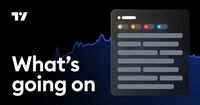Wall Street kicked off Wednesday, August 13, 2025, with a burst of optimism, as the S&P 500 and Nasdaq extended their record-breaking streaks. The S&P 500 opened up by 0.3%, marking yet another day in the green, following a Tuesday session that saw both indexes notch all-time highs. According to Seeking Alpha, this rally was fueled by growing bets that the Federal Reserve will soon cut interest rates—a sentiment turbocharged by the latest Consumer Price Index (CPI) report for July.
The numbers tell a story of exuberance. On Tuesday, August 12, the S&P 500 crossed the 6,400 mark for the first time ever, closing at a record 6,445.76. That’s the 16th all-time high for the index so far in 2025, and it wasn’t alone in its ascent. The Nasdaq Composite surged 1.4% to secure its 19th record close this year, while the Dow Jones Industrial Average climbed 484 points, or 1.1%, powered by broad-based buying. As reported by The Kobeissi Letter, the move was smooth and steady—there were no midday pullbacks, just a classic "risk-on" tape as traders leaned into the magnified probability of a September Fed rate cut.
What’s driving all this bullishness? July’s inflation data came in cooler than expected, easing worries about runaway prices and stoking hopes that the central bank will soon lower borrowing costs. As The Kobeissi Letter put it, "Traders are now pricing in a more than 90% probability of a Fed cut in September, with odds for additional October and December cuts climbing as well." Lower rates would reduce borrowing costs for corporations, potentially boosting investment, hiring, and future earnings growth. It’s a goldilocks scenario for equities—at least for now.
But there’s more to the story. Behind the scenes, U.S. businesses are absorbing the brunt of new tariffs, keeping headline inflation steady at 2.7% in July despite higher import costs. Research cited by The Kobeissi Letter shows that U.S. companies paid a staggering $28.4 billion in gross customs receipts to the government last month—a record high and a 273% jump from the previous year. While this has helped keep consumer prices in check, it’s squeezing corporate profit margins. For now, investors seem content to ignore that squeeze, focusing instead on the rate-cut narrative.
The technical picture echoes the fundamental optimism. According to Elliottwave-forecast.com, the S&P 500’s current rally can be traced back to an Elliott Wave cycle that began at the April 7, 2025 low. Since then, the index has been progressing as an impulse structure, with a series of waves marking its upward journey. Wave (1) peaked at 5,267.47, followed by a wave (2) pullback to 4,910.42. The index then surged in wave (3) to 6,427.02 before a corrective wave (4) concluded at 6,212.42. Within that correction, wave A dropped to 6,327.6, wave B climbed to 6,339.89, and wave C finalized the decline at 6,212.4, completing wave (4) in the higher degree.
Now, wave (5) is unfolding, and the S&P 500 has already broken above the wave (3) peak of 6,427.02. From the wave (4) low, wave 1 hit 6,346, wave 2 corrected to 6,289.37, wave ((i)) reached 6,389.7, and wave ((ii)) retraced to 6,310.32. The forecast expects a few more highs to complete wave 1 of (5), followed by a pullback to adjust the cycle from the August 2, 2025 low. As long as the 6,212.4 pivot remains intact, analysts expect the index to keep climbing. As Elliottwave-forecast.com notes, "The Index has since advanced in wave (5), breaking above the wave (3) peak of 6427.02, confirming the next upward move."
Of course, no rally is without risks. The technical analysts at Elliottwave-forecast.com caution that trading in the markets is inherently risky, and there is no "holy grail" to forecasting. "We are wrong sometimes like everyone else," they state, adding that investors should understand the risks before making any trading decisions.
Meanwhile, the broader market mood remains buoyant. The Kobeissi Letter reports that the U.S. dollar weakened and gold prices slipped on the heels of the inflation data, as investors rotated out of safe havens and into riskier assets like equities. "That’s textbook post-CPI positioning: when equity markets heat up, demand for safety valves like precious metals and reserve currencies tends to cool," the newsletter explains. Unless inflation or growth shocks reappear, this capital rotation toward stocks—and away from defensive plays—could have room to run.
Still, not all is rosy beneath the surface. The profit margin squeeze from record-high tariffs is real, even if it’s not front and center for investors at the moment. Absorbing those costs dents corporate earnings power, a factor that could come back into focus if the rate-cut narrative loses steam or if inflation data surprises to the upside in coming months. And while the current setup of moderating inflation and strong rate-cut expectations is as close to a goldilocks backdrop as equities could hope for, the labor market remains a potential weak spot. If hiring falters or wage growth stalls, the bullish sentiment could quickly reverse.
Looking ahead, traders are already speculating about whether the S&P 500 could reach 6,500 in the near term. With more than a 90% probability of a September rate cut priced in, and additional cuts possible in October and December, the stage seems set for continued gains—barring any unexpected shocks. As The Kobeissi Letter quips, "6,500 next?" It’s a question on everyone’s mind as the market continues to defy gravity.
For now, Wall Street’s optimism shows little sign of fading. The combination of cooling inflation, strong rate-cut expectations, and technical momentum has created a powerful tailwind for stocks. Whether this rally has staying power—or if it’s simply the calm before the next storm—remains to be seen. But as of mid-August 2025, the bulls are firmly in control, and the S&P 500’s record-breaking run continues to capture the market’s imagination.

![Elliott Wave forecast: S&P 500 (SPX) targets 6639 in final wave 5 [Video]](https://thumbor.evrimagaci.org/UIQZ_rPoazTK9lnog9Uxpib2Mrw=/200x0/tpg%2Fsources%2Fa69d3d75-85ab-4b09-900b-7adecdaa9324.jpeg)
